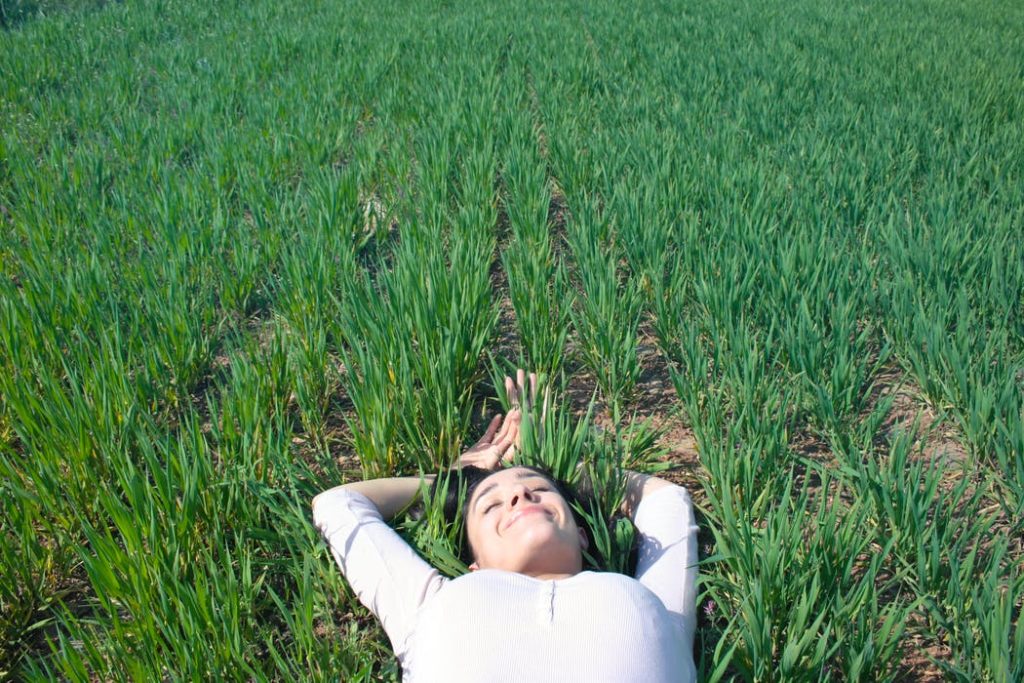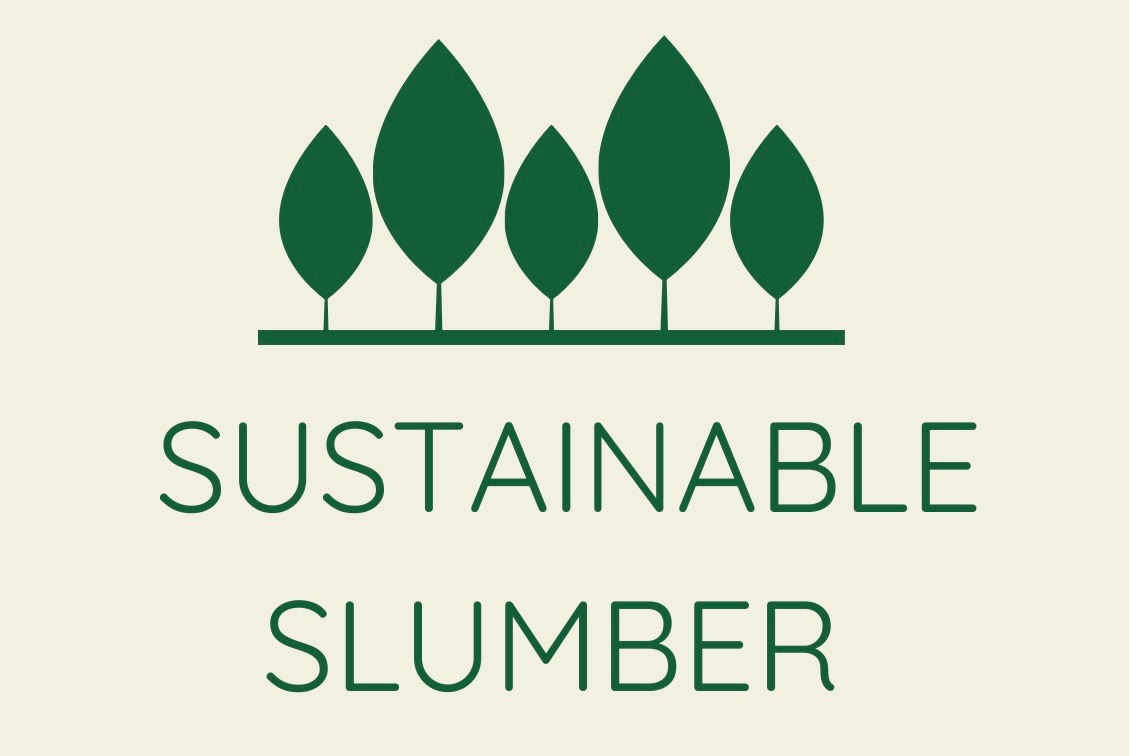
Here is a summary of the major certification, standard and seal programs to help you choose the perfect eco-friendly bed.
Greenguard Gold Certified vs CertiPUR: Both of these certifications are proudly proclaimed by mattress manufacturers but they are quite different. Perhaps the most telling difference between these two monikers is how many beds carry them. Almost every mattress on the market carries the CertiPUR certification. Greenguard Gold-certified mattresses, on the other hand, are quite rare and only a few carry this prestigious certification. This is due to the fact that the GreenGuard Gold standards are so high: these beds are tested for more than 350 VOCs! The most eco-conscious consumers typically opt for Greenguard-certified mattresses. Here are some of our favorites.
Our Favorite Greenguard Certified Mattresses
 PlushBeds: These luxury mattresses are remarkably green and boast a very low return rate. They are
PlushBeds: These luxury mattresses are remarkably green and boast a very low return rate. They are
one of Sustainable Slumber’s favorite mattresses! They have a cult-like following among their owners! PlushBeds has mattresses with many different firmness options and price points.
Nolah’s Natural mattress is an environmentally-friendly and hypoallergenic natural Talalay latex hybrid mattress. It’s wrapped in a luxurious organic cotton cover and has layers of GOTS Organic Wool!
What is GREENGUARD Gold? Widely regarded as a gold standard of eco-certifications, GREENGUARD tests products to determine whether they contribute to indoor air pollution. Underwriters Laboratory issues this certification after testing products for more than 360 different VOCs. You can check this website to make sure the mattress you are considering is carries the certifications it claims have.
As an environmentally-minded consumer, I have curated a list of my favorite green mattresses based on their certifications, comfort, and value! Check it out!
 What is a CertiPUR-US Certification? This is a certification given to foams attesting to its contents and emissions. A CertiPUR-US certification means a foam is made without chlorofluorocarbons, which are known ozone-depleters. Although they are already banned by law in the USA, they are still legal and used in other parts of the world. A CertiPUR-US foam does not contain PBDEs (a flame retardant that was banned by the EPA) or Tris flame retardants (identified by the Globally Harmonized System as potentially dangerous substances). Although foams rarely contain metal, a foam with this certification does not contain any heavy metals. These foams do not contain any formaldehyde or prohibited phthalates and goes a step further by testing for phthalates that are not officially banned but are controlled by the Consumer Product Safety Commission. Most importantly, a CertiPUR-US compliant foam has been tested to prove that its VOCs are only 0.5 parts per million. It is important to remember that a Certi-Pur-US Certification only tests the foam contained in a mattress and does not certify the finished product.
What is a CertiPUR-US Certification? This is a certification given to foams attesting to its contents and emissions. A CertiPUR-US certification means a foam is made without chlorofluorocarbons, which are known ozone-depleters. Although they are already banned by law in the USA, they are still legal and used in other parts of the world. A CertiPUR-US foam does not contain PBDEs (a flame retardant that was banned by the EPA) or Tris flame retardants (identified by the Globally Harmonized System as potentially dangerous substances). Although foams rarely contain metal, a foam with this certification does not contain any heavy metals. These foams do not contain any formaldehyde or prohibited phthalates and goes a step further by testing for phthalates that are not officially banned but are controlled by the Consumer Product Safety Commission. Most importantly, a CertiPUR-US compliant foam has been tested to prove that its VOCs are only 0.5 parts per million. It is important to remember that a Certi-Pur-US Certification only tests the foam contained in a mattress and does not certify the finished product.
The Global Organic Textile Standard (GOTS) GOTS is a globally-accepted standard for organic fibers. The Global Organic Textile Standard certifies mostly fiber products, yarns, fabrics, clothes and home textiles. Textile products that carry the GOTS organic label contain at least 95 percent organic fibers. GOTS also issues the “Made with Organic” label and these products contain a minimum of 70 percent organic fibers. A product with a GOTS label has been processed and manufactured in facilities that adhere to strict environmental standards regarding chemical inputs, energy usage, waste water and many other criteria important to eco-minded consumers. Organic fiber products can’t even be placed near conventional products; they must be clearly marked and kept separate! The GOTS label certifies a plethora of fair employment conditions, including a living wage, reasonable working hours and a safe, hygienic working environment.
The Global Organic Latex Standard (GOLS) GOLS is a standard for natural latex, a popular material in many eco-friendly beds. The GOLS certification process begins with the organic tree sap and has strict environmental criteria for each step of the manufacturing process. The GOLS label is also a testament to the fair working conditions of the people who manufacture these products. Any natural latex bed with this label contains at least 95 percent natural rubber latex.
USDA Organic and the National Organic Program (NOP) Many eco-friendly beds bear a USDA Organic seal. While the USDA Organic label mostly concerns itself with food products, the National Organic Program (NOP) certifies non-edible, agricultural products as organic, like fibers and wool. When you purchase a product with this seal, you can be assured that it has not been treated with most synthetic fertilizers and pesticides. Organic products have not been cultivated or handled using GMOs (genetically-modified organisms). In order to maintain this certification, an organic farm is inspected every year. Its seeds, soil, weed and pest management, water usage and many other factors are thoroughly investigated.
Oeko-Tex Certification This certification is given to products that have been tested for harmful substances. These harmful substances are not only those that are banned by law, but also those that have not been officially banned yet are considered to be harmful to health. When you buy a product with an Oeko-Tex certification, you can be sure it doesn’t contain formaldehyde, pesticides, heavy metals, tetra, pentachlorophenol, carcinogenic MAK amines and certain dyes which have been scientifically proven to have allergenic potential.
Eco-Institut Certification This German certification tests consumer products for VOCs, SVOCs, formaldehyde, heavy metals, pesticides, and many other controversial substances that can be released when a mattress off-gasses. This standard goes above and beyond the requirements of the law.
Organic Content Standard This standard helps to ensure consumer confidence in claims of an item’s organic content. A product carrying the Organic 100 logo contains at least 95 percent organically-grown material and the Organic Blended seal indicates that the product contains a minimum of 5 percent organically-grown material. This standard was known as “OE 100 Standard” and “ OE Blended Standard” before 2004.
USDA Certified Biobased Product Label This certification assures consumers that a verified amount of renewable biological ingredients are used in a given product and its packaging. USDA’s BioPreferred program issues this certification. The mattress industry often uses petroleum-based materials in their products, which rely on non-renewable resources. Bedding and linens must contain a minimum of 12 percent biologically-based ingredients to receive this certification, although many contain much more than that amount. Consumers who are concerned about the use of non-renewable resources and petroleum consumption will look for sleep products that bear this label.
Forest Stewardship Council Certification This worldwide certification from the Rainforest Alliance provides a guarantee to consumers that they are purchasing forestry products (including wood and natural latex) from responsible sources. This remarkably rigorous standard limits “clear cutting”, a practice where all trees in an area are uniformly cut down. Opponents of this practice say that clear-cutting is a form of deforestation and destroys natural habitats. FSC prohibits highly hazardous chemicals and protects water quality and rare old growth in forests. In addition, FSC protects the rights of indigenous people and communities near areas where forest products are cultivated.
SFI Standard 2015-2019 This standard is issued by the Sustainable Forestry Initiative, a charitable independent organization.This standard is concerned with raw materials and how their harvesting can impact the environment before they become a finished product. This standard measures key environmental values like protecting water quality, biodiversity, ecosystems and at-risk species. In addition, the standard tracks whether fibers are from legal and responsible sources.
Sustainable Furnishings Council: Mattress manufacturers can apply to become a member of this organization by taking a pledge that they will seek to reduce the use of unsustainable resources and toxic substances. They must commit to recycling and paying a living wage to employees in addition to other key environmental actions. To become a member of this organization, mattress manufacturers are not required to submit their products for testing. Once a mattress company becomes a member of the SFC, they can apply for bronze, silver, gold or platinum level recognition for their environmental efforts. One cannot achieve these levels of distinction by simply signing a pledge; they must be documented and submitted.

